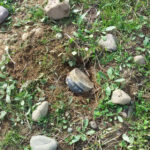Since the end of the first Nagorno-Karabakh War between Armenia and Azerbaijan in 1994,
landmines and unexploded ordinance continue to directly impact the livelihoods and health
of Armenians and Azerbaijanis. The conflict over Nagorno-Karabakh – the major impediment
to peace between Armenia and Azerbaijan – began in 1988 when the parliament of the
Autonomous Republic of Nagorno-Karabakh voted to secede from the Azerbaijani Soviet
Socialist Republic to join the Armenian Soviet Socialist Republic. Low-intensity violence
flared up into open warfare between Armenia and Azerbaijan following the collapse of the
Soviet Union, with Armenian forces occupying Nagorno-Karabakh and surrounding
Azerbaijani districts. The territories are still contaminated by anti-personnel and anti-tank
mines, as well as unexploded ordinance from bombs and cluster munitions used by both
sides.

